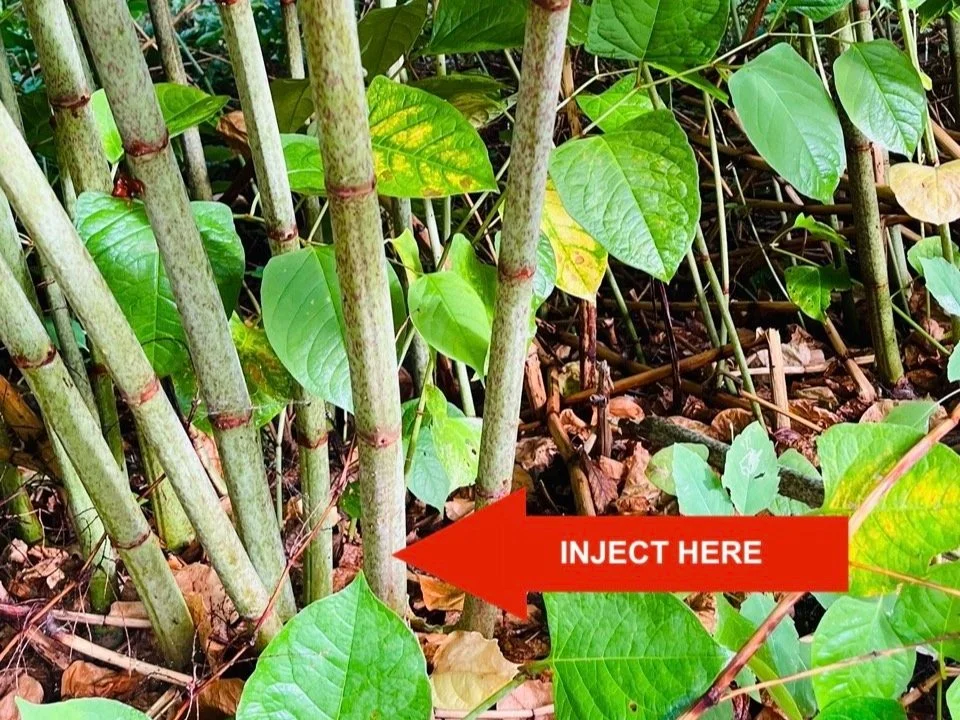Killing knotweed using herbicides like Glyphosate or Roundup®
DISCLAIMER: We are providing information, not recommendations. Herbacide is serious stuff and may not be the right solution for you. Here’s what we’ve synthesized based on research and experience.
Herbicide application isn’t a magic bullet but has promising success rates in certain circumstances, and when properly executed. Like other methods, it must be systemic to be successful. Follow-up applications may be required for up to five years.
Herbicides may be applied using a variety of methods depending on the environment and product. These methods include spraying, wiping, painting, and stem-injection. You must protect yourself, others, and the environment. This includes but is not limited to wearing protective clothing and gloves, using a respirator, and safeguarding pets, wildlife, and the natural environment around you. When it comes to methods, we favor a combination of painting and stem-injection for overall efficacy and because you’ll be facing a variety of stem sizes. A single method may not be practical and these particular methods have a far lower impact on the surrounding environment.
For these methods, a high concentrate glyphosate product (40% or higher) is generally recommended by practitioners.
No matter the method, cutting and removing visible portions of stalks early in the season (e.g. early June) is a best practice. Doing this, then trimming them back again mid-season weakens rhizomes and forces them to regrow stalks instead of strengthening themselves. Ideally, when it comes time for herbicide application, the plant will be weakened but retain enough leaves and stem for treatment. Remember to dispose of stalks properly! If any knotweed survives, or if a viable rhizome fragment wiggles its way to freedom, it will grow to torment you.
Painting knotweed leaves
This method is best for plants with smaller stems (0.5 inches or less). You’ll need disposable paintbrushes and, of course, protective clothing including rubber gloves and eye protection.
Choose a time when no rain is forecasted for at least an hour after application, ideally 24 hours.
Dip the end of a disposable paintbrush in herbicide (e.g. high concentrate glyphosate product, 40% or higher).
Carefully “paint” the tops of accessible leaves on as many plants as possible. A thin coat should suffice. Leaves typically dry within 60 minutes.
Properly dispose of all equipment and material following application.
This is a slightly more complicated process because you’ll need to use a herbicide injection gun. These devices can be found online and at some retailers. Follow manufacturer’s instructions. Stem injection is most effective with plants with stems wide enough to accommodate an injection needle (0.5 inches or greater). Injection needles come in various sizes so you’ll need to select a needle appropriate for the stems you’re targeting.
Use a high concentrate glyphosate product (40% or higher).
Load herbicide into injector following manufacturer’s recommendations.
Deliver a 5-7ml injection directly into each plant’s hollow stem between the lowest and second lowest visible node (see associated image).
Properly dispose of all equipment and material following application.



